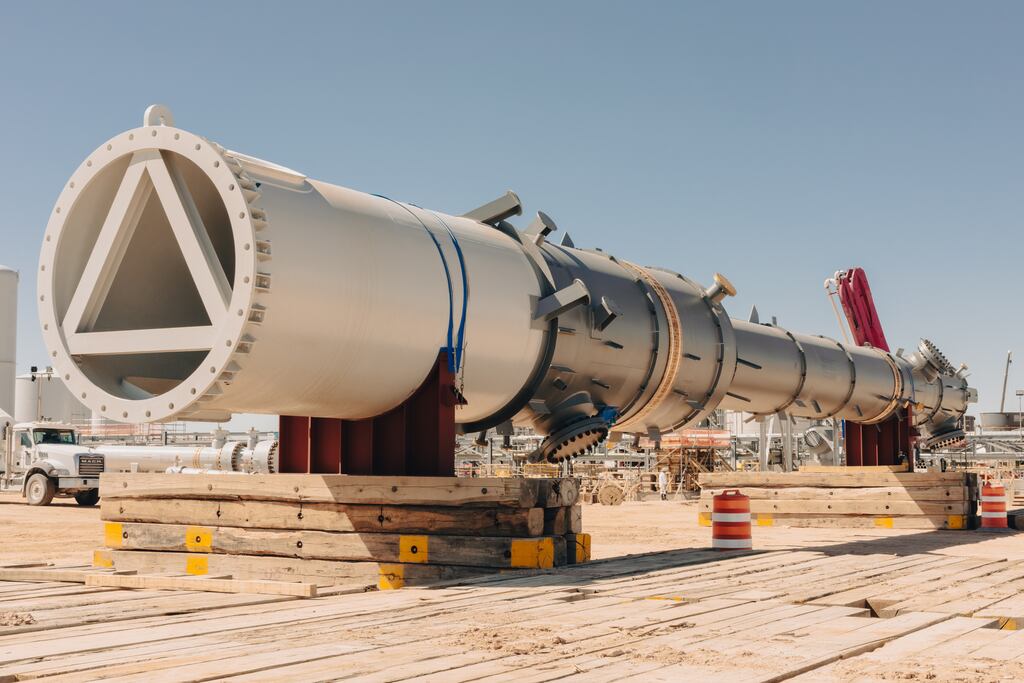In recent years, as the prospect of evading or even seriously mitigating climate catastrophe has receded from political view, we have increasingly been hearing about future technological “fixes” to the problem of a warming planet. You may for instance have read last week, in this paper, about an Irish agribusiness group being awarded a €48.4 million EU grant to develop Europe’s first large-scale carbon capture and storage facility. Carbon capture is a process by which C02 is filtered out, at the source of its emission, and transported to a long-term storage location, typically underground. In another, more technologically remote form of the process, carbon would be removed from the atmosphere, without needing to be filtered out at source.
There are more speculative technological projections too, categorised as geoengineering or climate engineering, and which would involve the wholesale alteration of the Earth’s atmosphere in order to counteract the effects of climate change. Things like “cloud seeding”, whereby sulphate aerosols would be added to clouds to make them brighter in colour, causing them to reflect incoming sunlight back into space. Or space-based reflectors, whereby gigantic mirrors would be put in orbit to deflect sunlight away from Earth.
Perhaps I’m cynical, or overly pessimistic, but none of this is very reassuring. I feel I might as well be reading about scientists genetically engineering rough beasts, and training them to slouch toward Bethlehem. Anyone who has seen Bong Joon-Ho’s 2013 dystopian sci-fi film Snowpiercer will, furthermore, recognise the notion of mitigating climate change by reflecting the sun’s light back into space as one that can only end in misfortune. (Specifically the misfortune of humanity’s pitiful remnants being packed into a high-speed train and driven perpetually around the planet’s frozen wastes by Ed Harris in a dressing gown.)
But even if we grant that such technologies would, if successful, be desirable, their increasing presence in the public conversation around climate points toward a troubling truth of our current situation: we are being asked to resign ourselves to climate breakdown.
READ MORE
It’s no longer about keeping climate change under control by reducing global carbon emissions; it is, increasingly, about finding technological means of undoing the damage that fossil fuel consumption continues to cause. The specific goal of keeping the planet’s average temperature to less than 1.5 degrees above pre-industrial levels – the level agreed to by the signatories of the 2016 Paris Agreement – has fallen away; so too, it seems, has the goal of transitioning away from fossil fuel toward renewable energy sources.
In their 2024 book Overshoot: How the World Surrendered to Climate Breakdown, the ecologist Andreas Malm and the geographer Wim Carton write about how the fossil fuel industry, and the politicians who serve its interests, have in recent years normalised the idea of exceeding critical global temperature thresholds with a view to recouping such excesses at some unspecified point in the hopefully not-too-distant future. Technologies such as carbon capture, which are still in an early experimental phase and which promise to be almost unworkably expensive, provide a false sense of security, and ultimately distract us from the urgent work of reducing emissions in the present.
“Overshoot” is the term climate scientists have given to the fanciful notion that we can just keep on going at our current rate of carbon extraction and consumption – overshooting as we go agreed targets for average global temperature – in the blithe belief that we’ll find some technological means of recouping those excesses.
“This acceptance,” they write, “can be tacit or explicit. It is often couched in the idea of a promised return to safer levels: we can let the warming pass 1.5 degrees or 2 degrees and then, at a later date, reverse it and turn the temperatures down to where they should be.
It resembles an almost religious faith in the power of technology and in the capacity of the free market to solve even the most intractable of problems
“Too much heat is acceptable, because it can be undone post factum with technologies for cooling the Earth. Overshoot is here not a fate passively acquiesced to. It is an actively championed programme for how to deal with the rush into catastrophe: let it continue for the time being, and then we shall sort things out towards the end of this century.”
By encouraging us to imagine future fixes to problems we are failing to seriously address in the present, these proposed technologies represent something like the opposite of a solution. They exist, first and foremost, to provide cover for the continued extraction and consumption of fossil fuel.
[ Sally Rooney: When are we going to have the courage to stop the climate crisis?Opens in new window ]
Since taking office in the US last month, the Trump administration has been busying itself with destroying anything that looks remotely like a governmental measure to protect the environment or mitigate climate disaster. But one piece of Biden-era legislation on climate looks conspicuously likely to remain intact: a tax credit for companies engaging in carbon capture measures. This particular tax break is overwhelmingly popular among oil and gas producers, because it amounts to handout for continuing to go about business as usual.
Speaking to The New York Times about the hopeful prospect for climate engineering solutions, Al Gore’s choice of words was intriguingly ambiguous: as the scale and seriousness of the problems facing us has become more and more urgently apparent, he said, “people have woken up and are looking to see if there’s any miraculous deus ex machina that can help”.
In the mechanics of storytelling, a deus ex machina – literally a “god from the machine” – is a contrived solution to an apparently insoluble difficulty in a plot, by means of the sudden introduction of a new character. It is, typically, a sign of a writer who has run out of ideas.
[ Vision and urgency lacking in Government response to climate crisisOpens in new window ]
What all of this represents is a new form of climate denialism: a denial not of the reality of man-made climate change per se, but of the sheer unlikelihood of our disruptively innovating our way out of it. It resembles, in some respects, an almost religious faith in the power of technology, and in the capacity of the free market to solve even the most intractable of problems.
The atmospheric concentration of all big greenhouse gasses continues to grow at an alarming pace, and the evidence in front of our faces makes it insistently plain that the catastrophe is already here. But do not fear: the Lord will provide. Technology will show us the way, and a god from the machine will appear to grant us redemption.













